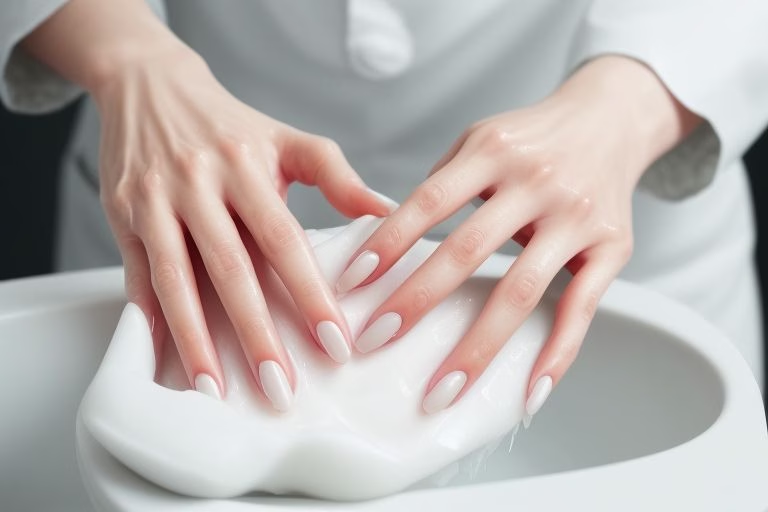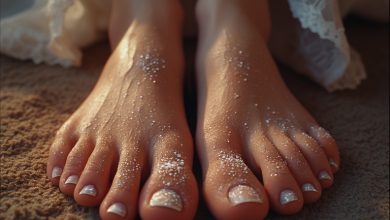
If you’ve ever winced while washing your hands or felt that nagging sting near your fingertips, you’re not alone. Broken skin around nails is a common yet frustrating issue that can be downright painful—and often embarrassing. But here’s the good news: You can fix it. And you can stop it from coming back.
This guide dives deep into what causes broken skin around nails, how to heal it fast, and the best prevention tips backed by dermatologists and real-life experience. Whether it’s due to harsh weather, bad habits, or hidden health issues, we’ve got you covered with easy, expert-approved solutions.
Let’s break it down, painlessly.

What Is Broken Skin Around Nails?
Broken skin around nails typically appears as dry, cracked, or peeling skin near your fingertips and cuticles. It’s not just a cosmetic problem—those tiny cracks can lead to infections, bleeding, and pain that interfere with your daily life.
Most people call them hangnails, but that’s just part of the picture. This condition can include:
-
Dry, flaky patches
-
Cracked cuticles
-
Peeling skin at the sides of nails
-
Sore, inflamed edges
Fact: According to American Academy of Dermatology, dry and broken skin around nails is one of the top winter skin complaints.
1. Dry Weather Is a Major Culprit
When the air gets cold and dry, it sucks moisture out of your skin—especially the thin skin around your nails. Winter is prime time for broken skin around nails, but dry climates can trigger it year-round.
Solution:
Use a thick hand cream or cuticle balm multiple times a day. Look for ingredients like shea butter, glycerin, or ceramides.
Pro Tip: Keep mini hand lotion in your car, bag, and nightstand. Hydration is key!
2. Hand Washing & Sanitizers Make It Worse
Yes, cleanliness is crucial—but overwashing and alcohol-based hand sanitizers can be brutal on your skin.
These habits strip away the skin’s natural oils, leading to redness, cracking, and soreness around nails.
Fix It:
-
Use a moisturizing hand soap
-
Switch to alcohol-free sanitizer
-
Apply moisturizer immediately after washing
Check out this guide on hand care from Healthline to learn more.
3. Nail Biting & Picking Are Skin Sabotage
Let’s be honest—many of us bite or pick at our nails when we’re stressed, anxious, or bored. But this habit damages the skin barrier and creates micro-tears around your nails.
These small wounds invite bacteria and fungi, which can lead to infection and swelling.
Break the Habit:
-
Use bitter-tasting nail polish
-
Try fidget tools or stress balls
-
Keep your nails neatly trimmed
Supporting Tip: Regular manicures or wearing press-on nails can deter you from picking or biting.
4. You Might Be Lacking Key Nutrients
Your nails and skin reveal a lot about your overall health. Deficiencies in vitamin B7 (biotin), vitamin C, zinc, or omega-3 fatty acids can lead to:
-
Peeling skin
-
Weak nails
-
Delayed wound healing
Boost Your Diet With:
-
Salmon, walnuts, chia seeds (for Omega-3)
-
Citrus fruits, strawberries, bell peppers (for Vitamin C)
-
Eggs, almonds, spinach (for Biotin and Zinc)
Related read: Top Foods for Healthy Skin and Nails – WebMD
5. Allergic Reactions & Harsh Chemicals Can Trigger It
Your hand cream, nail polish, or cleaning products could be sneakily causing skin irritation. Some people are sensitive to fragrances, parabens, and acetone.
Symptoms include:
-
Itchy, red, or broken skin
-
Burning sensation
-
Swelling around nail edges
How to Avoid This:
-
Go for fragrance-free, hypoallergenic products
-
Wear gloves when cleaning or using chemicals
-
Use acetone-free nail polish remover
Recommended: National Eczema Association’s product directory for safe skincare options
6. You Could Have a Skin Condition Like Eczema or Psoriasis
Sometimes, broken skin around nails isn’t just a surface issue. Conditions like eczema or psoriasis can cause chronic skin peeling, inflammation, and pain around fingertips and cuticles.
If you notice:
-
Constant flare-ups
-
Bleeding or oozing
-
Intense itching
It’s time to see a dermatologist for a proper diagnosis.
Treatment Might Include:
-
Prescription steroid creams
-
Antibiotics for infection
-
Light therapy for severe cases
Learn more here: Eczema Symptoms and Treatments – Mayo Clinic
7. Neglecting Cuticle Care Can Worsen the Problem
Your cuticles are more important than you think—they act as a barrier between your skin and bacteria. Cutting or pushing them too aggressively can damage that barrier.
Proper Cuticle Care:
-
Soften cuticles before pushing
-
Use a cuticle oil daily
-
Never cut live cuticle skin
Bonus Tip: DIY cuticle soaks with olive oil and warm water work wonders.
Best Natural Remedies for Broken Skin Around Nails
You don’t need fancy products to get relief. Here are some natural, budget-friendly options:
-
Coconut Oil: Antibacterial + deeply moisturizing
-
Aloe Vera Gel: Soothes inflammation and speeds healing
-
Oatmeal Soak: Calms irritated, itchy skin
-
Vitamin E Oil: Repairs damaged skin and protects from dryness
Apply these at night and wear cotton gloves to lock in moisture.
Top Products That Actually Work (Dermatologist-Recommended)
To truly heal broken skin around nails, you need consistent care. Here are top-rated products users swear by:
-
CeraVe Healing Ointment
-
Burt’s Bees Lemon Butter Cuticle Cream
-
Aquaphor Advanced Therapy
-
EltaMD Moisturizer for Sensitive Skin
-
O’Keeffe’s Working Hands Cream
Note: Always do a patch test before using a new product.
How to Prevent Broken Skin Around Nails for Good
It’s not just about healing—it’s about keeping your hands healthy long-term.
✅ Daily Habits:
-
Moisturize after every wash
-
Trim nails regularly
-
Use gentle nail tools
🚫 Avoid These:
-
Harsh nail treatments
-
Picking or biting skin
-
Using nails as tools
Make nail and skin care a routine, not a reaction.
When to See a Doctor
If your skin:
-
Doesn’t heal after 1-2 weeks
-
Looks infected (pus, swelling, or redness spreading)
Seek help from a dermatologist or healthcare provider. It could be a sign of something more serious.
Quick FAQs
Is it bad to pull off peeling skin around nails?
Yes! It can cause bleeding, infection, and worsen the damage. Use a clean nail clipper or moisturizing cream instead.
Can diet really improve nail skin health?
Absolutely. Vitamins and hydration play a huge role in your skin’s ability to heal and stay soft.
Is broken skin around nails contagious?
Not usually, but if it’s caused by an infection (like paronychia), it could spread. Always keep hands clean and avoid sharing tools.
Final Thoughts: Your Hands Deserve Love Too
Broken skin around nails might seem like a small issue, but it can seriously mess with your day—and your confidence. Luckily, the fix is simple: Moisturize, protect, nourish, and be consistent.
With the right care and attention, you’ll have soft, healthy hands you’re proud to show off. No more hiding them in your sleeves or wincing at the sight of your cuticles.
Loved this guide? Share it, bookmark it, and don’t forget to check out more hand and nail care tips on trusted sites like Allure, WebMD, and DermNet.



